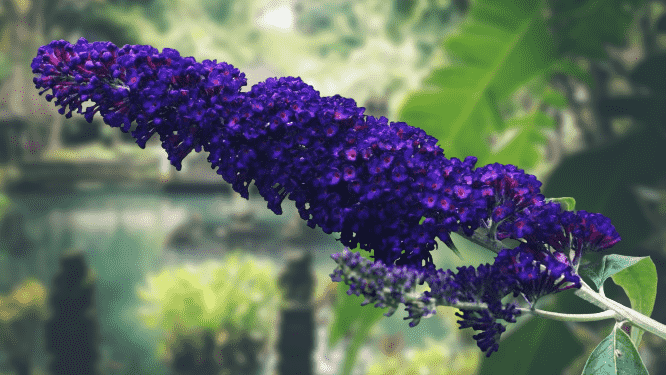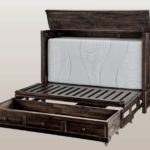Contents
- 1 Introduction to Dwarf Butterfly Bushes
- 2 Benefits of Growing Dwarf Butterfly Bushes
- 3 Choosing the Right Location for Your Plant
- 4 Tips for Planting and Caring for Dwarf Butterfly Bushes
- 5 Common Pests and Diseases to Watch Out For
- 6 Pruning and Maintenance Techniques for a Healthy Plant
- 7 Creative Ways to Use Dwarf Butterfly Bushes in Landscaping
- 8 Conclusion
Introduction to Dwarf Butterfly Bushes
Greetings from the vibrant world of tiny butterfly bushes! Buddleia davidii are beautiful shrubs that are tiny in size but significant in terms of their benefits. Look no further if you’re looking for a plant to liven up your garden or landscape. Any green thumb enthusiast who wants to draw pollinators, bees, and butterflies will find that dwarf butterfly bushes are the ideal complement.
These miniature miniatures of the well-known butterfly bush provide all the charm and attraction of their larger counterparts in a more compact package, making them ideal for limited spaces or for those who prefer smaller plants. We’ll review what you need to know in this guide to cultivate and benefit from these enchanted tiny treasures. Now, let’s explore the world of miniature butterfly shrubs and discover their mysteries together!
Benefits of Growing Dwarf Butterfly Bushes
- Buddleja davidii, or dwarf butterfly bushes, are lovely accents to any garden and come with so many advantages that any gardener should have them. With their wonderfully scented blossoms, these small and colorful plants draw various butterflies, transforming your outdoor space into a mystical and energetic place.
- The capacity of miniature butterfly shrubs to draw pollinators is one of their key benefits. Butterflies support reproduction, pollinate plants, and maintain a healthy ecosystem. You may help local wildlife populations and improve the aesthetic appeal of your garden by planting these adorable shrubs.
- Their ability to adapt to many soil types and climates is another advantage. Due to their hardiness and resilience, dwarf butterfly shrubs can be found in many different parts of the world. These adaptable plants may flourish and bring color to your environment regardless of the climate—hot desert climates or acidic soil conditions.
- Dwarf butterfly bushes not only draw butterflies to your yard, but they also attract beneficial insects like bees and hummingbirds. Hummingbirds grace us with their elegant presence and facilitate cross-pollination, while bees assist in pollination.
- Furthermore, once planted, these bushes demand very little upkeep. These plants can endure dry times without losing their vigor or beauty because they are drought-tolerant. They are, therefore, perfect for people who lead busy lives and seek visually striking but low-maintenance gardens.
- Dwarf butterfly shrubs also come in various hues, from soft pinks to vivid purples, so you have a lot of alternatives when choosing the color scheme for your garden. You can create visually striking combinations by combining several species or utilizing them as focal points throughout your landscape design.
- The captivating scent that dwarfs butterfly bushes‘ blossoms exude throughout their peak bloom season, usually summer through fall, is last but most definitely not least. Your garden will smell divinely beautiful as these blossoms fill the air around it.
Choosing the Right Location for Your Plant
Location is crucial for your tiny butterfly bush to develop healthily and produce abundant blooms. Please choose an area that receives at least 6 to 8 hours of direct sunlight daily for these compact shrubs, as they do best in full sun. They will get the energy they need from this to generate colorful blossoms.
Because of its adaptability, dwarf butterfly shrubs can be planted in various soil types. But they shine in somewhat wet, slightly mushy, and draining soil. Soil amendments like compost or other organic materials can improve drainage in heavy clay soil.
When deciding where to put the plant, keep its eventual size in mind. Though dwarf types can grow to a height and breadth of 2-3 feet, they still need room to spread out without being impeded by other plants.
Also, remember that the plant might not receive adequate sunlight because of surrounding trees or buildings during particular parts of the day. Although they cannot bloom in complete shadow, these hardy shrubs can withstand moderate shade.
When deciding where to plant your little butterfly bush, consider accessibility. It is preferable to place it where you can quickly go up close to personalize its beautiful flowers and give it the regular attention it requires.
These considerations will help you choose the best location for your small butterfly bush, ensuring its success and producing a visually arresting focal point for your garden!
Tips for Planting and Caring for Dwarf Butterfly Bushes
- When planting and caring for dwarf butterfly shrubs in your garden, a few vital tips will help ensure their success. Choosing the right location is the first step. These plants require full sun, so choose a spot with at least six hours of direct sunshine daily.
- Use a garden fork or a tiller to loosen the soil before planting your bush. Improved drainage will make root implantation less difficult. The nutritional value of the soil can be increased by adding compost and other organic waste materials that have broken down.
- Be sure the hole is twice as deep and wide as the root ball of your small butterfly shrub before planting it. Before planting, cut off any twisted or tangled roots. Backfill the base of the plant with dirt, pressing it down gently.
- Make careful to give your butterfly bush plenty of water when it first sprouts. The soil should never be wet; it should always be dry. Mulching helps keep moisture in the soil surrounding plants and keeps weeds from growing.
- With periodic fertilization, your little butterfly bush might eventually thrive. Use a balanced slow-release fertilizer in the spring or early summer, as directed on the container.
- Plants that are regularly pruned grow more quickly and remain healthier. Trim any diseased or unhealthy branches to good wood in late winter or early spring using clean, sharp pruners. You can carefully trim the larger branches to prevent them from spreading once the petals have faded.
- Watch out for common pests like aphids or spider mites that might occasionally infest these plants. If discovered early on, water spraying or insecticidal soap should be used to remove them.
- You’ll be well on your way to having a gorgeous and colorful addition to your garden if you follow these easy planting and maintenance instructions for dwarf butterfly bushes.
Common Pests and Diseases to Watch Out For
It would help if you were mindful of possible pests and diseases that could cause serious harm to your dwarf butterfly bushes. Although these hardy shrubs require little care and are generally robust, there are a few enemies to be aware of.
Aphids are one form of common pest. You may notice browning leaves and stunted development if your plant’s sap is depleted due to the fast proliferation of these tiny insects. Aphid management strategies include the application of insecticidal soap and the introduction of predatory insects like ladybugs.
Another type of bug that could be troublesome is the spider mite. Because these little pests are like hot, dry environments, water your shrub frequently and maintain a high humidity. If your plant exhibits any symptoms of spider mites, such as yellowing leaves and tiny webs, you should water it well or apply an organic miticide.
Powdery mildew is a fungus that causes a thin film of white mold to grow on the leaves of dwarf butterfly bushes. Make sure plants have adequate room to grow by properly spacing them out to avoid this issue. Fungicidal sprays could be used as an added precaution if needed.
If the soil doesn’t drain properly or is constantly damp, root rot may become a problem. Sand or compost added to soil enhances its structure and helps with drainage. Always give your plants adequate water and space them apart so air can reach their roots.
Being vigilant and adopting preventative measures against these common pests and illnesses will ensure that your miniature butterfly bush develops magnificently in its environment!
Pruning and Maintenance Techniques for a Healthy Plant
- You can ensure a robust and healthy plant by regularly tending to and trimming your small butterfly bushes. You can control the shrub’s size and shape, encourage new growth, and increase the number of flowers produced by routinely pruning it back. Remember these plans:
- When no new growth has appeared, it is the best time to cut small butterfly bushes before spring blossoms. As a result, the plant can swiftly regenerate itself by growing new leaves.
- Tools: Gently split the plants into two or three sections without damaging the stems with loppers or sharp pruning scissors. To stop the transmission of germs, clean your tools with rubbing alcohol before each use.
- If any plant’s branches are diseased or otherwise damaged, trim them close to the base to remove dead wood. When they are old enough to be handled securely, remove them.
- Finally, remove any branches too long or twisted with care to help the shrub keep its compact structure.
- Deadheading: You can improve the plant’s appearance and promote more blossoming later by removing spent blossoms.
- Eliminate any dropped rubbish from the vicinity of plants to lessen the chance of insect infestations.
- Plants require frequent care, including mulching, heavy watering during dry spells, and sparing fertilization once or twice a year with a slow-release, balanced fertilizer for flowering shrubs.
- These simple pruning and maintenance instructions will help you maintain a beautiful and healthy dwarf butterfly bush all season long!
Creative Ways to Use Dwarf Butterfly Bushes in Landscaping
In terms of landscaping, there are a lot of solutions accessible. The little butterfly bush is one plant that might add some elegance and charm to any outdoor area. You can use this adaptable shrub’s colorful blossoms and striking leaves to improve your surroundings artistically.
You can incorporate tiny butterfly bushes into your landscape design by creating a vibrant hedge or border. These small shrubs visually enhance flower beds and paths and draw pollinators like butterflies and hummingbirds with their fragrant, nectar-rich blossoms.
Second, make a focal point out of tiny butterfly plants. These gorgeous flowers will draw attention wherever you plant them, whether alone or in groups. Arrange them tastefully near patios, decks, or lounging spots for a striking display.
Growing miniature butterfly shrubs in containers is a fantastic choice for people with little outdoor space. Therefore, rearranging them and adding color when needed is easy. Arrange them on patios or balconies, or hang them from hooks for a more vertical look.
Adding a few tiny butterfly shrubs to a mixed plant arrangement can add a unique touch. They make a powerful statement when combined visually with other perennial blooms like black-eyed Susans or coneflowers.
You can put various flowering plants, such as the little butterfly bush, in a small pollinator garden to attract pollinators like bees and butterflies. These helpful creatures will thrive, and your garden will look better with food on the table.
When designing a landscape, lighting should be considered from the beginning. When you place spotlights next to small butterfly shrubs at dusk, you can appreciate their delicate shape and colorful flowers even more.
Conclusion
You can see that dwarf butterfly shrubs are lovely plants that provide beauty and value to any garden. These little plants are mighty, drawing in pollinators like butterflies and releasing a delightful scent as they do it.
An essential factor to think about while planting dwarf butterfly shrubs is their placement. Soil that drains well and lots of sunshine can help them grow the best. They can thrive all year round if given the proper care and planted in the right spot.
Keep an eye out for common plant pests and illnesses. Keeping your dwarf butterfly shrubs healthy is as simple as seeing and fixing problems immediately.
The plant will take form and promote new growth with consistent pruning. Watering and fertilizing plants regularly will keep them looking beautiful.
Place little plants that attract butterflies in nontraditional areas of your yard. Let your creativity run wild when deciding where to put them in your landscaping. You can line sidewalks with them or add colorful touches to container plants; the possibilities are endless.
Why not wait a bit? Obtain these intriguing shrubs right now and begin constructing your little haven! You and the butterflies you nurture will be delighted by the dwarf butterfly shrubs since they are beautiful, functional, and adaptable—my best wishes for the success of your gardening initiatives.










